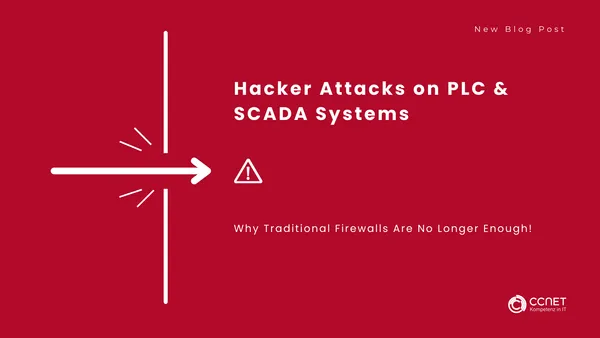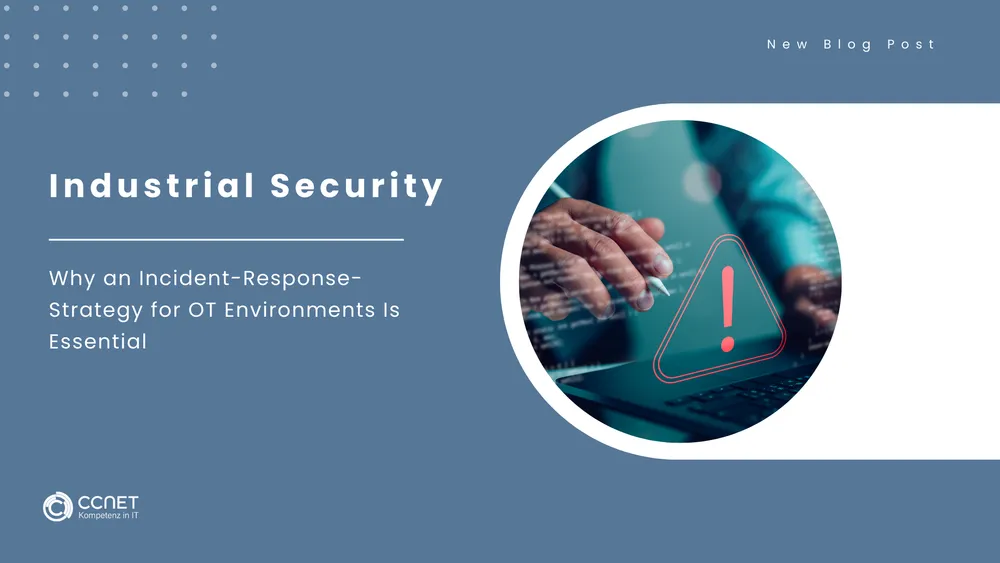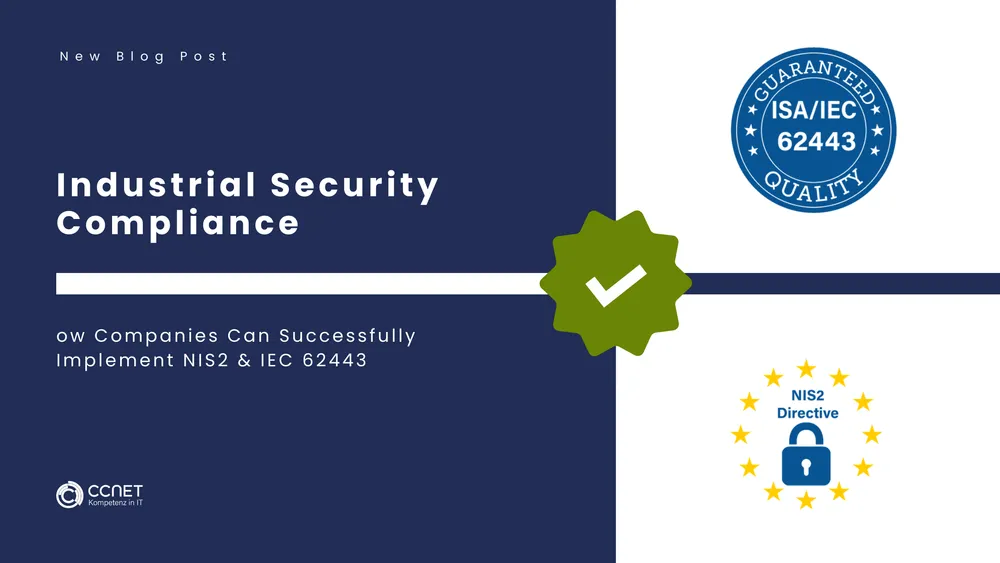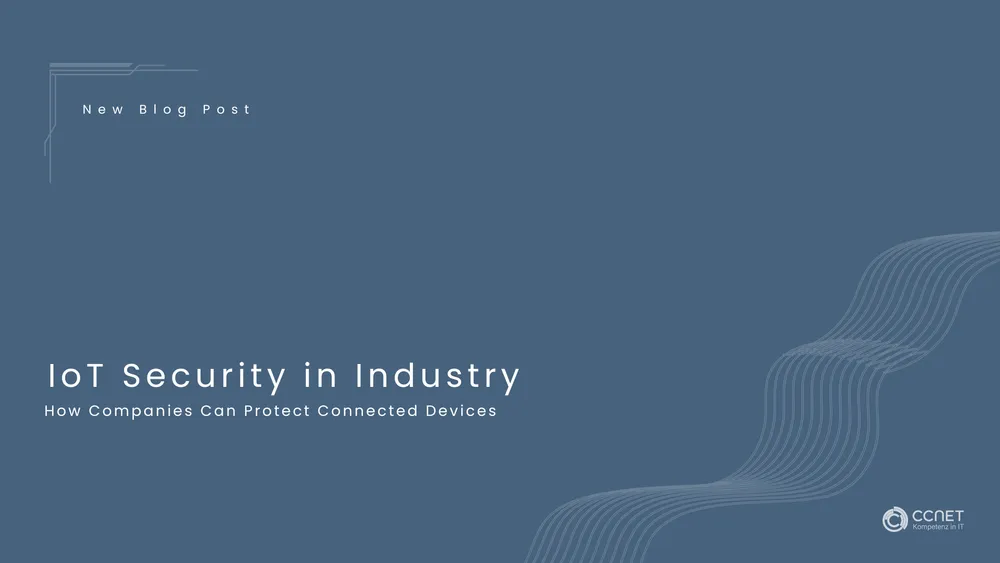
CCNet
Apr 30, 2025 • 2 min read

Hacker Attacks on PLC & SCADA Systems: Why Traditional Firewalls Are No Longer Enough
Production facilities are increasingly becoming targets for cybercriminals.
Hackers have realized that targeted attacks on industrial control systems (PLC, SCADA) allow them to manipulate production lines, shut down machines, or sabotage critical processes.
While IT networks are often protected by modern firewalls, OT security networks are often unsecured or only equipped with outdated security solutions. However, traditional firewalls are not enough to secure industrial systems against targeted attacks.
Further information can be found here: it-infrastructure-hardening
Why Are PLC & SCADA Systems So Vulnerable?
PLC (Programmable Logic Controllers) and SCADA (Supervisory Control and Data Acquisition) systems are the core of modern production facilities.
They control machines, process sensor data, and ensure smooth operations.
However, these systems were never designed for cybersecurity.
Many control systems run on outdated operating systems, use insecure protocols, or are directly connected to IT networks without proper segmentation.
The Most Common Security Issues in Industrial Control Systems:
- Unencrypted communication – Many SCADA systems use outdated protocols without encryption (e.g., Modbus, DNP3).
- Direct internet connection – Some systems are directly accessible via the internet, without protection mechanisms.
- Default passwords & lack of authentication – In many OT security networks, default login credentials are not changed.
- Lack of patch management – Production facilities often run for years with unpatched software.
Result:
Hackers can easily access control systems and manipulate production processes at will.
Notable Cyberattacks on Industrial Control Systems
-
Stuxnet (2010) – Attack on Iranian Uranium Enrichment Facilities
Stuxnet was the first known cyberattack on PLC systems.
The worm infected Siemens S7 controllers and manipulated centrifuge speeds to sabotage uranium production. -
Triton/Trisis (2017) – Attack on Industrial Safety Systems
Hackers targeted safety controllers in a petrochemical plant.
Goal: Disable safety mechanisms to cause a physical catastrophe. -
Attack on Italian Industrial Companies by an APT Group (2022)
An Advanced Persistent Threat (APT) group specifically targeted Italian production facilities.
Goal: Manipulate PLC systems to disrupt operations and force production outages.
Conclusion: Industrial Control Systems Are a Prime Target – and Traditional Firewalls Are Not Enough
How Can Companies Secure Their PLC & SCADA Systems?
-
Implement Network Segmentation with Next-Gen Firewalls
- IT & OT networks must be strictly separated (e.g., using VLANs).
- Next-Gen Firewalls (e.g., Forcepoint, Palo Alto) detect industrial attacks in real time.
-
Implement Secure Authentication & Access Control
- IAM (Identity & Access Management) with multi-factor authentication (MFA) for all control systems.
- Manage access rights with role-based permissions.
-
Use Intrusion Detection & Real-Time Threat Monitoring
- SIEM (Security Information & Event Management) with specialized threat detection for OT networks.
- IDS (Intrusion Detection Systems) to monitor machine communication and detect anomalies.
-
Implement Encryption and Secure Protocols
- SCADA communication must use encrypted protocols (e.g., IEC 62351 for Modbus & DNP3).
- Eliminate unencrypted data transmissions within production facilities.
-
Conduct Regular Security Audits & Patch Management
- Control systems must be regularly reviewed and updated with security patches.
- Perform penetration tests in OT environments to identify vulnerabilities early.
Conclusion: Modern Security Solutions Are Essential for Industrial Control Systems
Attacks on SCADA & PLC systems are increasing – and traditional firewalls are not enough.
Industrial companies must proactively protect their control systems before an attack occurs.
A combination of network segmentation, secure authentication, and real-time monitoring is the key to a secure production environment.
Visit Us at SPS Parma and Learn How Modern Security Solutions Protect Industrial Control Systems


